Native name ممتاز قادری Cause of death Hanging Occupation Policeman | Full Name Mumtaz Hussain Nationality Pakistani Criminal penalty Capital punishment | |
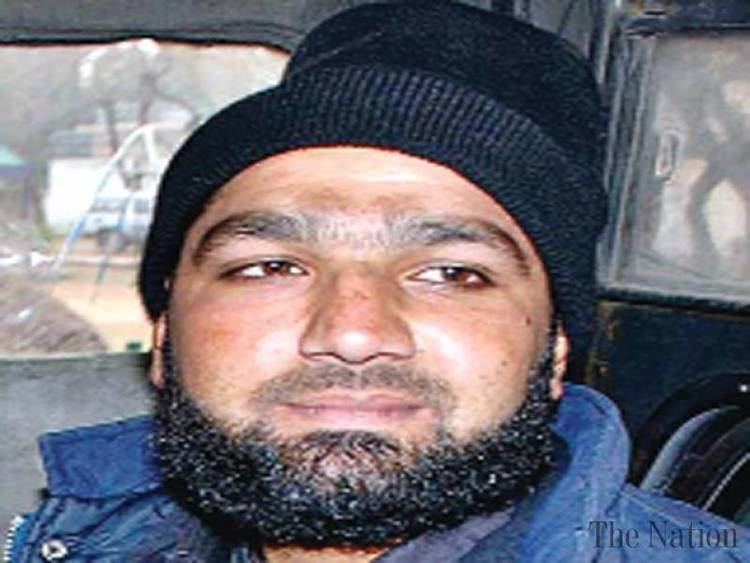 | ||
Motive Sunni Islamic fundamentalism Siblings Malik Abid, Dilpazeer Awan Similar Salmaan Taseer, Muhammad Tahir‑ul‑Qadri, Muhammad Ilyas Qadri, Mushtaq Qadri, Alhaj Muhammad Owais Ra | ||
Malik Mumtaz Hussain Qadri (1985 – 29 February 2016), better known as Mumtaz Qadri (Urdu: ممتاز قادری), was a Pakistani policeman and Islamic fundamentalist. He served as a commando of the Elite Police and in the squad of personal bodyguards of former Governor of Punjab Salmaan Taseer until, on 4 January 2011, he assassinated Taseer for speaking in favor of blasphemy-convicted Asia Bibi and against the blasphemy law. He was convicted by the Islamabad High Court, sentenced to death and hanged in February 2016.
Contents
- Life and career
- Taseers murder and conviction
- Execution
- Reaction to the execution
- Named structures
- References
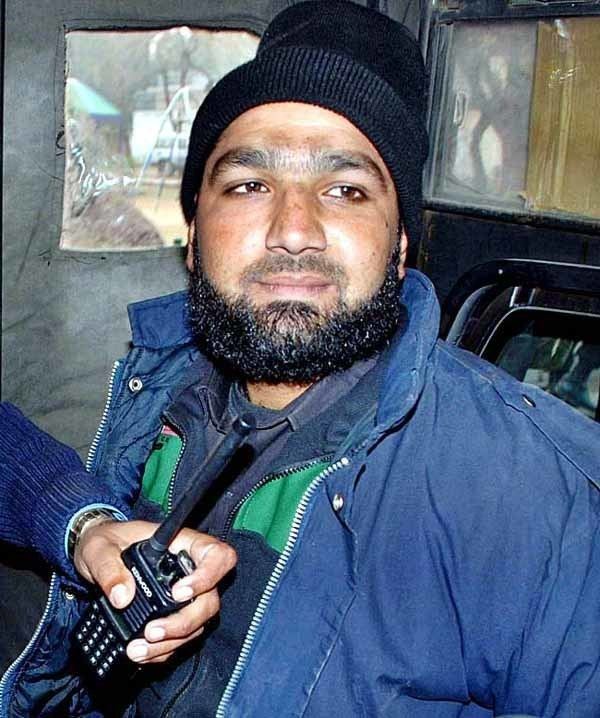
Life and career
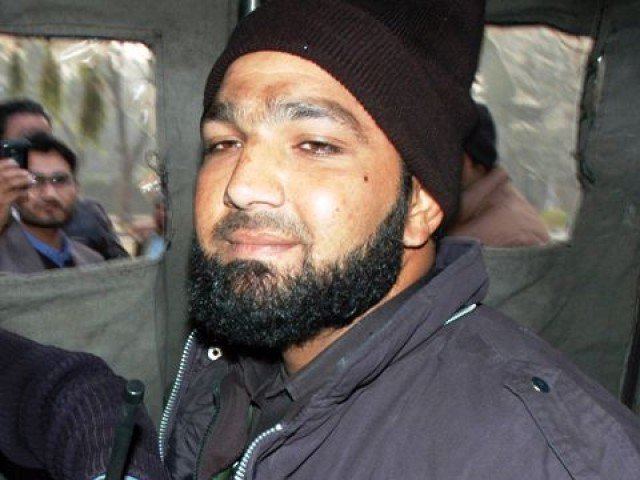
Qadri was born in 1985 in Rawalpindi, Punjab. He was a son of a vegetable seller in Muslim Town, Rawalpindi. Qadri joined Punjab Police in 2002 and promoted to Elite Police in 2007. In 2009 he got married and had one son. In 2010, he joined the squad of the security guards of former Governor of Punjab, Salmaan Taseer.
Taseer's murder and conviction
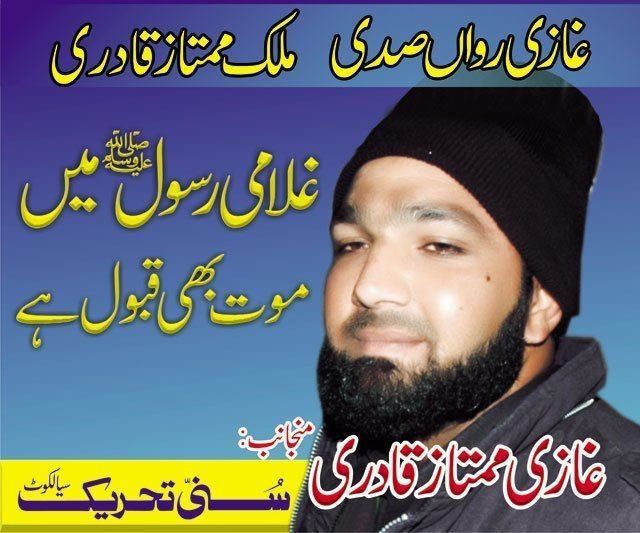
On the evening of 4 January 2011 Governor Taseer was at Kohsar Market in Islamabad. Qadri, who was there in the capacity of Taseer's bodyguard, shot Taseer 28 times and killed him. He surrendered immediately after the shooting and was arrested. According to Qadri, he killed the governor for his support of Asia Bibi, who was sentenced to death for insulting the Islamic prophet Muhammad, and for speaking against the blasphemy law in Pakistan.

From the day he was arrested, held in custody on a five-days remand. He appeared in court on 9 January 2011 and confessed that he had killed Salman Taseer because of his speaking against the blasphemy law. During his appearance in court over 300 lawyers offered to represent him pro bono. On 10 January 2011, he was sent to Adiala Jail on 14 day judicial remand. Because of the security issues, his trial was held in Adiala Jail; it began on 14 January 2011. He was charged with the murder of the Governor of the Punjab.
Execution
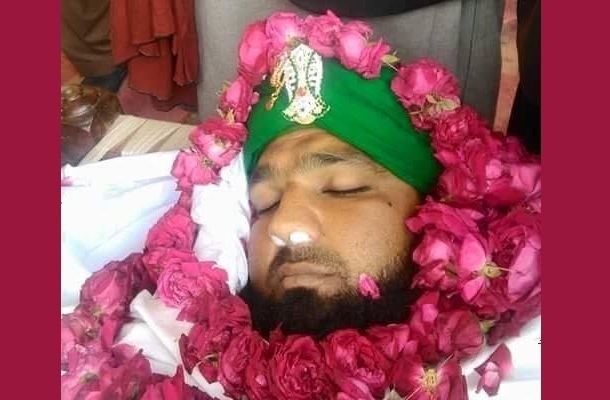
On 10 October 2011 the court found him guilty and condemned him to death. He filed an appeal in Islamabad High Court on 6 October 2011 against his death sentence, and the appeal was admitted on 11 October 2011. Justice Dost Mohammad made clear his view that the accused, a uniformed officer, was not entitled to take the law into his own hands and murder a man who was under his protection. His appeal was rejected in December 2015, and he was hanged on 29 February 2016 around 4:30 a.m. at Adiala Jail in Rawalpindi. The funeral of Mumtaz Qadri was held on 1 March 2016 at Liaqat National Bagh in Rawalpindi. According to an estimate, the funeral was attended by over 100,000 people including Hamid Saeed Kazmi. The Pakistan Electronic Media Regulatory Authority banned electronic media from broadcasting his funeral because it was violation of Article 19 of the Constitution of Pakistan. Pakistan Federal Union of Journalists condemned the ban on media. It was also noted that Barelvis attended the funeral in large numbers. Qadri was buried in a village Bara Kahu in Islamabad.
Reaction to the execution
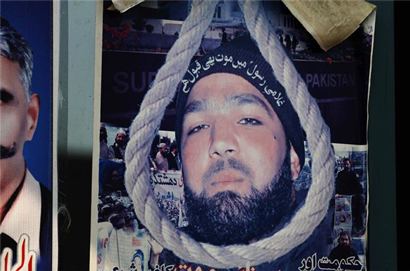
Protests began immediately by the Sunni Islamist organisations all over the country against the execution. Activists protested in major cities of Pakistan, including Islamabad, Karachi, Lahore and Peshawar. Lawyers in Islamabad called one day strike against the decision. Sunni Tehreek announced protests all over the country. Rawalpindi-Islamabad Metrobus was also suspended due to the protests in the city. Markets and business centers were closed and disturbance in traffic was reported in different locations of Lahore, Karachi and Islamabad. The adulation that Qadri received following his execution was compared to that given to Ilm-ud-din, who murdered a book publisher in 1929. However, the execution decision was supported by many Islamic scholars, including Mohammad Khan Sherani, chairman of the Council of Islamic Ideology said, "Mumtaz Qadri’s act though driven by religious sentiments was illegal because he had taken the law into his own hands and he faced punishment because no one is above the law". Qadri's supporters also claimed that he was hanged on 29 February, a date which comes round every four years, in order to deny his anniversary."
On March 27, 2016, twenty-five thousand had gathered at Liaquat National Bagh in Rawalpindi. Ten thousand of them marched from Rawalpindi into the Red Zone in Islamabad to commemorate the Chehlum of death of Qadri, which is the end of the forty-day mourning period. The protesters torched a station of the Rawalpindi-Islamabad Metrobus and several cars parked there. Several major arteries leading into the city were closed, and cellular service was suspended as well. They staged a sit-in outside the Parliament of Pakistan and refuse to leave unless Sharia was imposed throughout Pakistan. The Pakistan Armed Forces was called in to disperse the protesters. On the same day, protesters carrying pictures of Qadri attacked the Karachi Press Club, and burned a car belonging to Jaag TV, in retaliation for the press's "lack of coverage of their event". This happened on the same day that a bomb attack in Gulshan-e-Iqbal Park in Lahore killed 69 people.
Qadri's execution has become a rallying point for Pakistan’s Barelvis and some Sufis. Hundreds of people per day visit his grave, which is being transformed into a pilgrimage site.
Named structures
In 2014 a Barelvi mosque was built in Islamabad named after Mumtaz Qadri and as of 2014, the mosque was so popular that it started raising funds to double its capacity.
